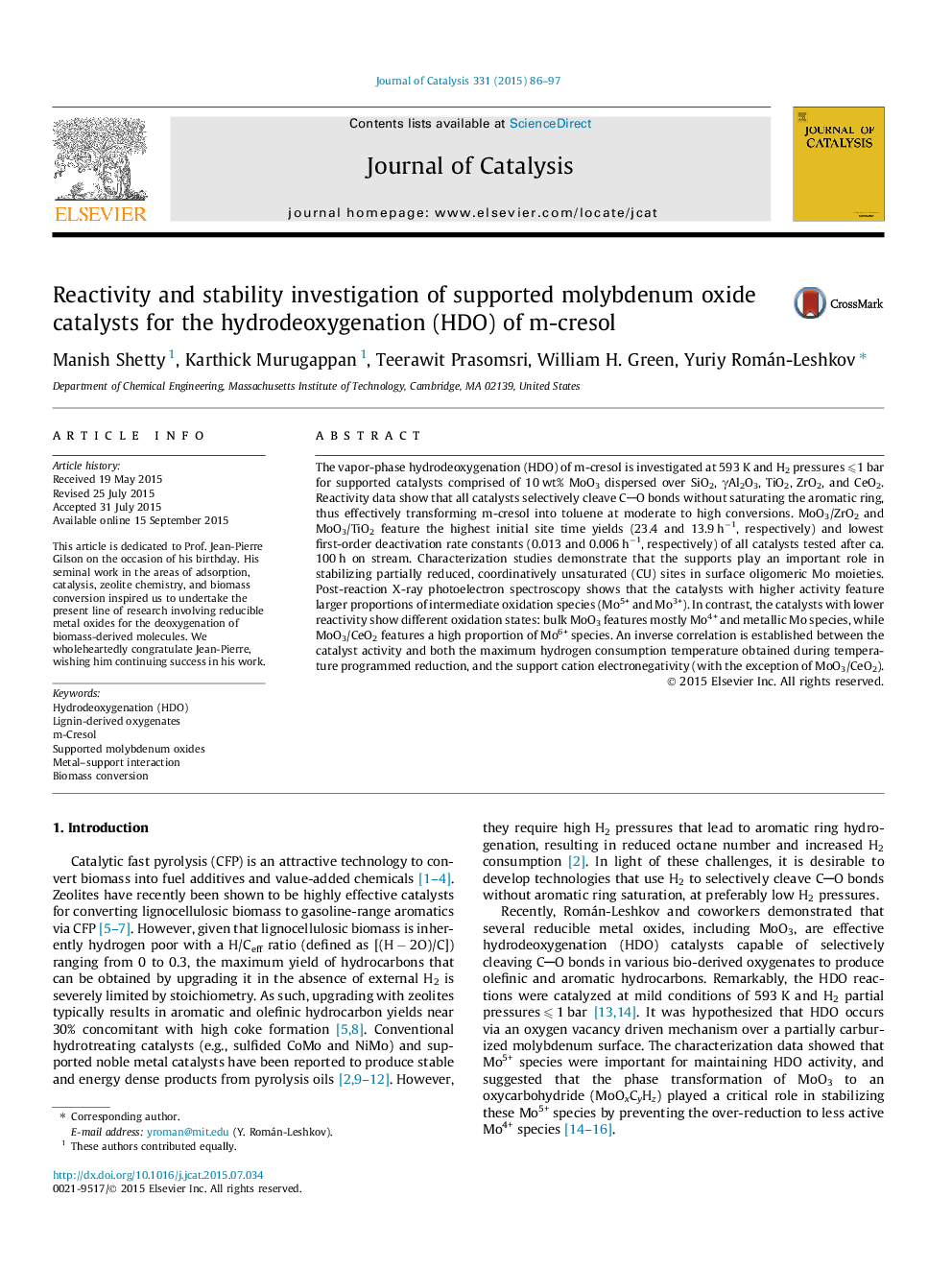| کد مقاله | کد نشریه | سال انتشار | مقاله انگلیسی | نسخه تمام متن |
|---|---|---|---|---|
| 60699 | 47543 | 2015 | 12 صفحه PDF | دانلود رایگان |

• Supported molybdenum oxide catalysts effectively transform m-cresol into toluene under mild conditions.
• Highest HDO activity and stability is obtained for catalysts that stabilize Mo5+ and Mo3+ species.
• HDO reactivity is inversely correlated to support cation electronegativity, with the exception of MoO3/CeO2.
• Catalyst deactivation is reversible.
The vapor-phase hydrodeoxygenation (HDO) of m-cresol is investigated at 593 K and H2 pressures ⩽1 bar for supported catalysts comprised of 10 wt% MoO3 dispersed over SiO2, γAl2O3, TiO2, ZrO2, and CeO2. Reactivity data show that all catalysts selectively cleave CO bonds without saturating the aromatic ring, thus effectively transforming m-cresol into toluene at moderate to high conversions. MoO3/ZrO2 and MoO3/TiO2 feature the highest initial site time yields (23.4 and 13.9 h−1, respectively) and lowest first-order deactivation rate constants (0.013 and 0.006 h−1, respectively) of all catalysts tested after ca. 100 h on stream. Characterization studies demonstrate that the supports play an important role in stabilizing partially reduced, coordinatively unsaturated (CU) sites in surface oligomeric Mo moieties. Post-reaction X-ray photoelectron spectroscopy shows that the catalysts with higher activity feature larger proportions of intermediate oxidation species (Mo5+ and Mo3+). In contrast, the catalysts with lower reactivity show different oxidation states: bulk MoO3 features mostly Mo4+ and metallic Mo species, while MoO3/CeO2 features a high proportion of Mo6+ species. An inverse correlation is established between the catalyst activity and both the maximum hydrogen consumption temperature obtained during temperature programmed reduction, and the support cation electronegativity (with the exception of MoO3/CeO2).
Figure optionsDownload high-quality image (202 K)Download as PowerPoint slide
Journal: Journal of Catalysis - Volume 331, November 2015, Pages 86–97